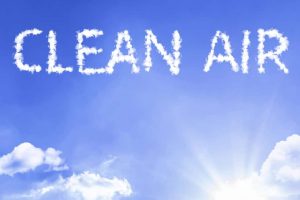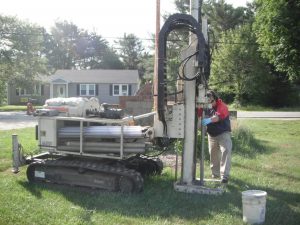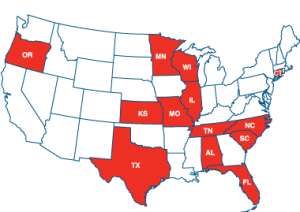 Clean Air Day is an opportunity to acknowledge how important air quality is to our health. Since 1963, December 17 has been a day to celebrate one of the first environmental laws in the United States – The Clean Air Act. Through collaboration, the EPA works with both state and local governments to ensure clean air for everyone. Among the biggest threats facing this campaign are volatile organic compounds (VOCs). Common in thousands of household products, VOCs are invisible to the naked eye and can have serious effects on human health.
Clean Air Day is an opportunity to acknowledge how important air quality is to our health. Since 1963, December 17 has been a day to celebrate one of the first environmental laws in the United States – The Clean Air Act. Through collaboration, the EPA works with both state and local governments to ensure clean air for everyone. Among the biggest threats facing this campaign are volatile organic compounds (VOCs). Common in thousands of household products, VOCs are invisible to the naked eye and can have serious effects on human health.
VOCs are emitted as gases from certain solids or liquids. VOCs include a variety of chemicals commonly found in household and industrial products such as paints, varnishes, cleaning products, cosmetics, fuels, and even dry cleaned clothes. The effects of VOCs on human health can include irritation of the nose, eyes, or throat, and some VOCs have been linked to causing organ damage and cancer. Knowing the dangers of VOCs can help you plan to reduce exposure. Concentrations of many VOCs are consistently higher indoors than outdoors. Indoor levels can be up to 1,000 times outdoor levels during, and for several hours after, certain activities such as paint stripping or using aerosol sprays.
 The EPA provides many steps on how to avoid VOCs both indoors and outdoors. Simple and effective steps such as proper ventilation and reduced use of pesticides can greatly improve the quality of air inside your home or building. For potentially hazardous products such as varnishes or fuel, it is important to read all warning labels and practice safe storage and handling. The EPA also advises to keep minimum exposure to chemicals such as benzene and perchloroethylene, or “perc,” a chemical commonly used for dry cleaning. Currently, there is no federally enforceable standard set for VOCs in non-industrial settings such as a home or small business. To learn more about VOCs, including current guidelines or recommendations set by various organizations, visit Lawrence Berkeley National Laboratory’s Indoor Air Quality Scientific Findings Resource Bank.
The EPA provides many steps on how to avoid VOCs both indoors and outdoors. Simple and effective steps such as proper ventilation and reduced use of pesticides can greatly improve the quality of air inside your home or building. For potentially hazardous products such as varnishes or fuel, it is important to read all warning labels and practice safe storage and handling. The EPA also advises to keep minimum exposure to chemicals such as benzene and perchloroethylene, or “perc,” a chemical commonly used for dry cleaning. Currently, there is no federally enforceable standard set for VOCs in non-industrial settings such as a home or small business. To learn more about VOCs, including current guidelines or recommendations set by various organizations, visit Lawrence Berkeley National Laboratory’s Indoor Air Quality Scientific Findings Resource Bank.
Clean air, along with drinkable water, is one of the most precious resources on the planet. It is easy to find evidence of how air quality is impacting the health of millions of people around the globe. Unfortunately, you don’t have to live in the shadow of a smoke-spewing factory or next to a major freeway to be affected by polluted air. Even the interiors of businesses and residences can be subject to poor – and potentially dangerous – air quality due to VOCs. In some cases, VOCs have been detected in buildings from operations that occurred years before the site was repurposed. These sites often require mitigation to reduce concentrations of VOCs. Properties of closed gas stations and dry cleaners are among the most common examples of required VOC mitigation due to the volatile chemicals used for operations. The good news is that once the contaminated property — or brownfield — has been mitigated, it can often be used for any type of commercial or residential purpose, effectively turning it from a brownfield into a greenfield. In this way, mitigation has a real and tangible benefit to not only the property owner but also to the municipality in which the property is located and to the environment.
 To preserve and improve the health of all humans and other life on Earth, we must defend the planet’s air quality. The Clean Air Act has provided the basis for an effective means of limiting dangerous air pollutants for the last half century. This Act and its enforcement by the EPA has undoubtedly saved the lives of hundreds of thousands of people and continues to set new standards for air quality management. Many western European nations have enacted similar legislation, which is a big step in the right direction for clean air!
To preserve and improve the health of all humans and other life on Earth, we must defend the planet’s air quality. The Clean Air Act has provided the basis for an effective means of limiting dangerous air pollutants for the last half century. This Act and its enforcement by the EPA has undoubtedly saved the lives of hundreds of thousands of people and continues to set new standards for air quality management. Many western European nations have enacted similar legislation, which is a big step in the right direction for clean air!



